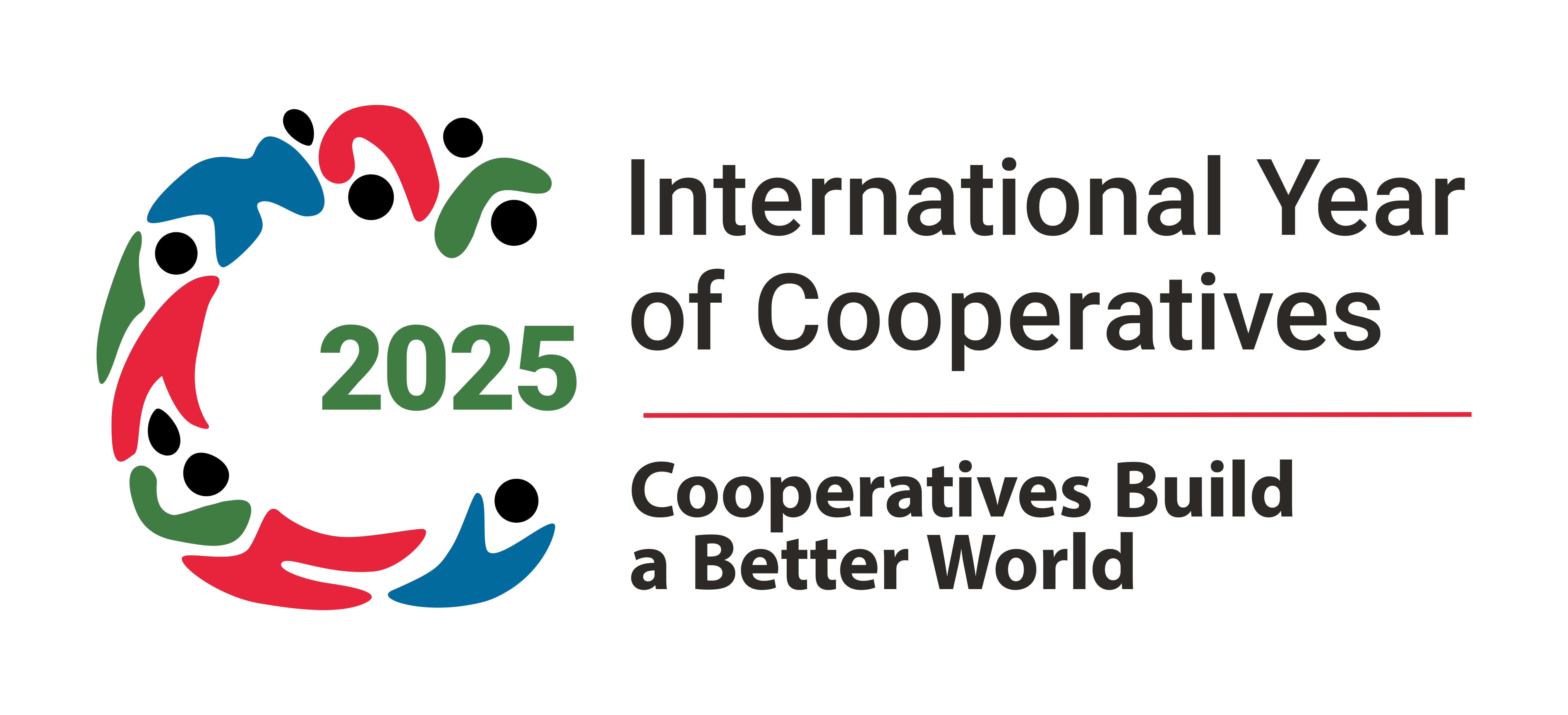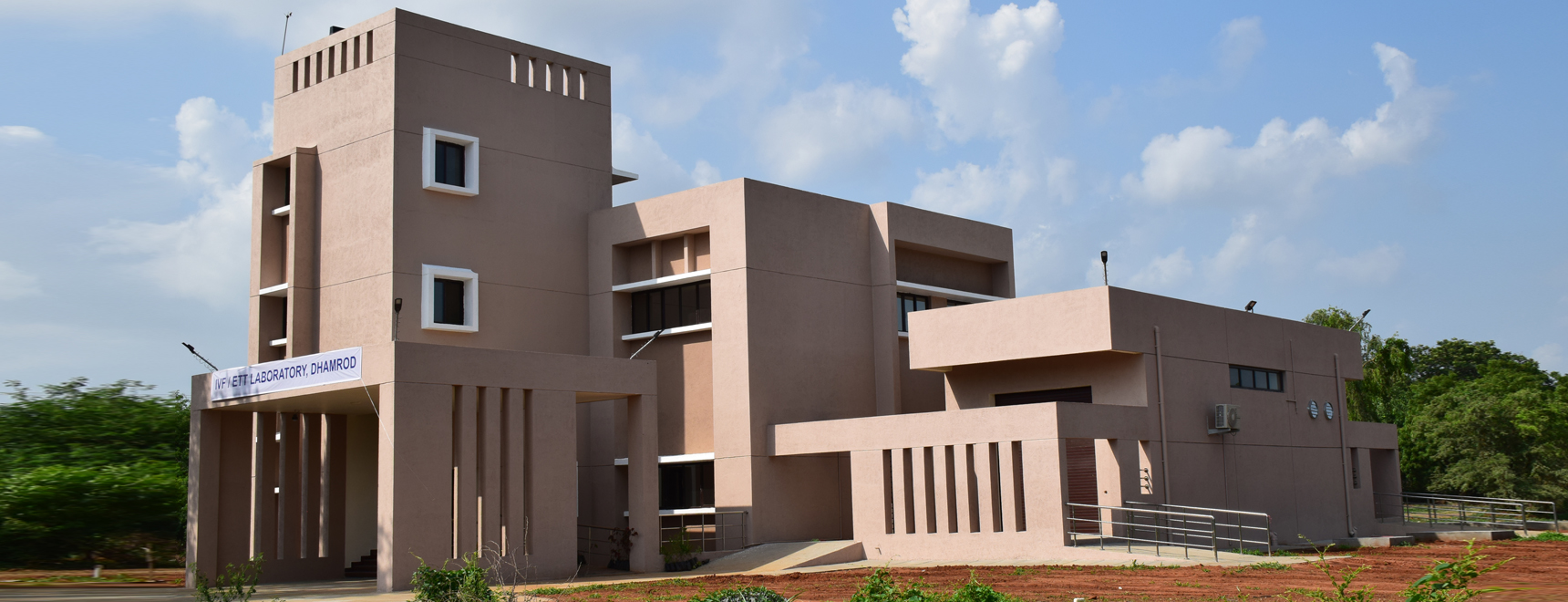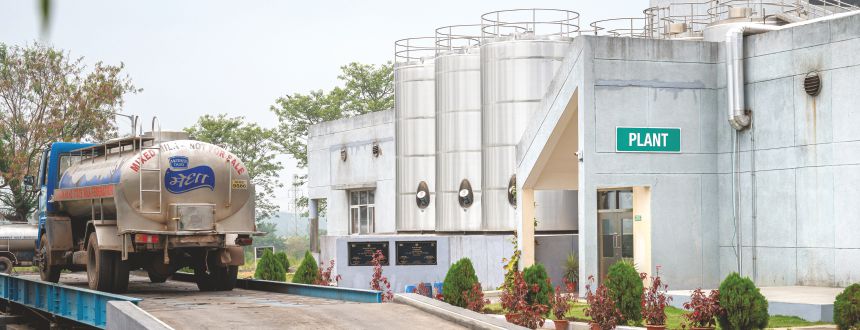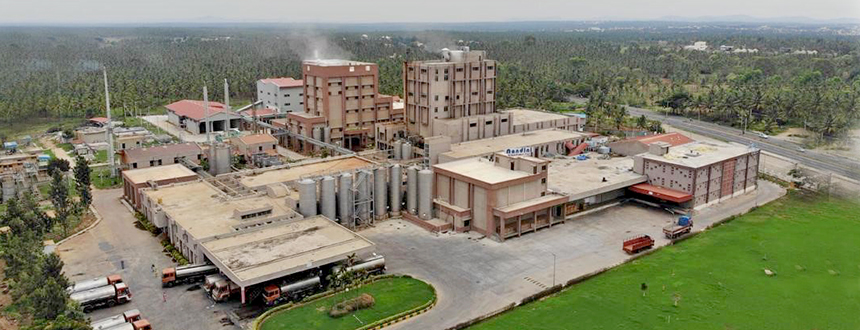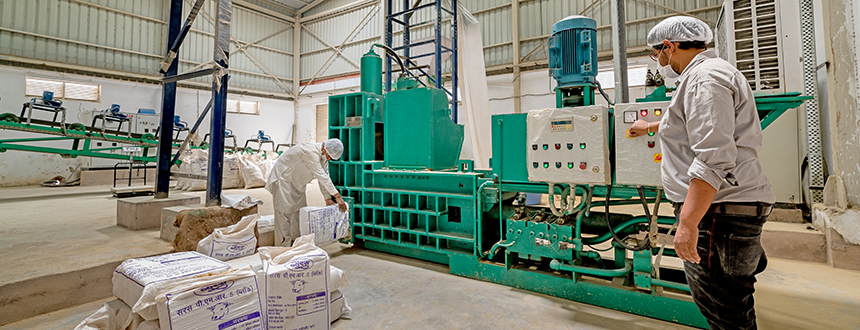Technological Developments
NDDB keeps track of technological advancements and incorporates latest techniques & features in the plant design. Some of the latest applications in the projects include:
1. BABY FOOD POWDER PLANT & AUTOMATED LIQUID MILK PLANT
- NDDB commissioned an automated 120 MTPD Baby Food Powder plant along with automated liquid milk plant of 10 LLPD in March 2019 at Sabarkantha (Gujarat). The 5 MT/Hr Baby food plant with 21 days X 24 hr non-stop drying operation with two MVR Evaporators. The Powder plant is also designed to produce Skim Milk Powder, Whole Milk Powder & Dairy Whitener.
- The plant has distinguished features of: CIP-able Bag house in series with cyclone or with bypass option, Desiccant wheel based dehumidification system, APC (Advance Predictive Control), online moisture analysis. Online meter for measurement of Total Solids at Evaporator and Pre-treatment/pre-filtration by Activated Carbon Filter/ Multi Grade Filter & UF/RO plant for re-utilisation of milk Condensate.
- Implemented online spray monitoring system covering all nozzle cameras to understand the actual spray pattern. Similarly, electro-pneumatic nozzle locking system with close feedback system is implemented to ensure safe/trouble-free operation.
- Use of SFC functions at each process operation at Operating Station/SCADA for familiarisation of operators about process sequence and easy understanding of pre-checks/interlocks for safe & optimised operations.
2. EFFLUENT /WASTE WATER TREATMENT PLANTS
- Development and Commissioning of skid mounted waste water treatment plant for Bulk Milk Chilling units (BMCU)
- Generation of Biogas from Domestic food waste
- Thermophillc Continuous Stirred Tank Reactor (TCSTR) based Anaerobic Sludge Digester is planned and designed for the treatment of ETP sludge (Primary DAF sludge & Secondary Aerobic Sludge) at a Dairy and the same is currently under execution.
3. SOLAR ENERGY
- Use of solar Energy for direct Thermal utilisation by steam/hot water generation. All new projects undertaken by NDDB shall have inbuilt component of CST system. Currently CST system is being implemented at Uppoor Dairy, Katraj Dairy (3 No.) & proposed at Ajmer Dairy.
- Solar Photovoltaic system: Following the drop in prices for solar PV panel & components, NDDB has been advocating for installation of ground mounted or Rooftop Solar PV in Dairy projects. Project under planning: 200 KWp at Semen Station Purnea, Bihar, 750 KWp at Automated Dairy and Powder Plant at Ajmer Dairy.
- Village level SPV for BMC: NDDB has installed a 5 KW Solar Photovoltaic system with Thermal storage system to augment village level BMC at Mujkuva in the year 2019.
- NDDB is working with MNRE to develop a framework for deployment of the system across India for a grid independent BMC.
4. GREEN BUILDING
- Building complying with the standards stipulated for Green Buildings is under execution at Ajmer Dairy. The long term benefits of Green Building can contribute in building energy savings of 30-40 per cent annually, savings in water up to 20-30 per cent, and also reducing Green House Gas emissions with use of low volatile organic compounds.
- Sourcing 75 per cent of the building materials within a radius of 400 Km helps in reducing emissions of carbon dioxide and thereby help reduce in global warming.
- NDDB has conceptualised and developed Ajmer Dairy as Green Building, which would be the first Green Dairy in India.
5. BIOCONTAINMENT LABORATORY and (GMP) VACCINE PRODUCTION FACILITY
- The objective of biocontainment is to confine an infectious organism or toxin, thereby reducing the potential for exposure to laboratory workers or persons outside the laboratory, and the likelihood of accidental release to the environment. Physical containment is achieved through the use of laboratory practices, containment equipment, personal protective equipment, and laboratory and facility design.
- The design and construction of the facility provides a barrier to protect people, animals, and the environment outside of the laboratory from infectious agents or toxins that may be accidentally released from the laboratory. Engineering controls include non-porous, easily cleaned surfaces, interlocked doors that control laboratory access, “hands-free” sinks that reduce inadvertent exposures to infectious agents or toxins, and directional air handling systems that filter air in the laboratory. Facilities include Primary containment prevents direct contact with biohazardous material as well as protection of personnel and the immediate laboratory environment from exposure to infectious agents. Secondary containment is the protection of the environment external to the laboratory from exposure to infectious materials.
- NDDB has set up large Biocontainment Laboratory & Animal Experimentation facility of level 3+ for ICAR, at Bhubaneswar & Bhopal ; BSL2+ Lab at Bengaluru; BSL 3 Laboratory & Animal testing Unit (LATU) at TANUVAS.
- NDDB have also specialised in (Bacterial/Viral) Vaccine manufacturing (GMP) facility for animal disease such Anthrax, Brusella, FMD, HS, BQ, Sheep Pox etc.

